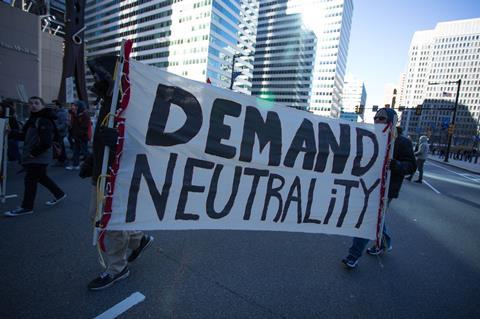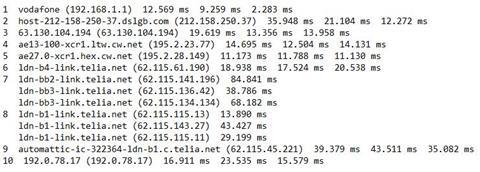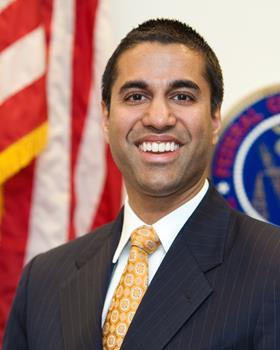The concept of “net neutrality” has captivated the attention of the general public thanks in part to a decision in the US to scrap rules that prevent broadband providers charging to deliver certain content.
The Federal Communications Commission ruling overturned a 2015 decree which classified broadband access as a telecommunications service, which made it subject to common carrier regulations, similar to telephone networks.
Initial reactions have taken the form of “does this mean I have to pay for Twitter now?” and “this is the beginning of censorship on the internet.”
What is “Net neutrality?”

Just what does all this legislative-ese mean?
A common carrier is a private entity that provides service to the general public without discrimination for the “public convenience and necessity.”
Examples of common carriers include airlines, railroads, buses, phone companies, and others. The key phrase in the net neutrality discussion is “without discrimination.”
A private carrier has the ability to discriminate in the way it provides service, from offering differing qualities of service, to the outright refusal to provide service to specific customers. In the case of broadband providers, net neutrality is generally taken to mean that a provider will not throttle, block, or degrade traffic originating from another broadband or service provider.
It’s further assumed that preferential treatment will not be given to specific entities. Yet, even in jurisdictions where there are strict neutrality rules, as we will see, this is not always the case.
To fully understand the issues around this complex subject and who and what may or may not be affected by them, we need to look at the concept of “peering” on the internet, how it developed, and the way it works today.
The internet is not a single, unified network, it is a conglomeration of many, many individual networks connecting to one another using Internet Protocol (IP).
De-peering
Peering is the term used for the interconnection between those networks, which up to now has been done voluntarily and without cost. Two networks agree to allow any and all traffic to flow between and through their network infrastructures. These agreements range from tacit assumptions to written contracts, and are necessary for the efficient functioning of the internet as a whole.
As the internet made the transition from being subsidised by academia and defence to a commercial offering from the telcos, peering became more contentious, with some service providers “de-peering” or refusing traffic from others due to disputes around levels of traffic and issues of fairness.
De-peering has taken place not only between ISPs, but also between ISPs and services such as YouTube.
Peering is essential to the efficient flow of data across the internet. Connections between a user and a server are rarely point to point, with multiple access points and providers involved. For example, this is the route taken between my computer and the blog hosting company Wordpress:

This route involves the hand off of data from the UK provider Vodafone (indicated by the Vodafone, dslgb.com and cw.net addresses) to the Swedish provider Telia, and finally to 192.0.78.17, which is a server at wordpress.com.
If Vodafone and Telia were to de-peer from each other, the data traffic would have to find a different route that might not be as fast or efficient.
Where net neutrality comes into play is that Vodafone and Telia are expected to treat the Wordpress data no differently than any other data – they don’t slow traffic from one service or offer another service some sort of “fast lane” for a price.
Net neutrality in the US

FCC Chair Ajit Pai led the organisation’s decision to reverse net neutrality rules that were established in 2015. In a speech in December last year, he described the decision as “a mistake” and said “there was no problem to solve”.
However, some US senators are attempting to block the FCC’s move, with reports of a Democrat-led effort to overturn the FCC decision.
The nature of peering agreements has changed over time. Consolidation has led to fewer and fewer service providers, meaning the need for fewer peering agreements. In the example above, the cw.net domain is a legacy of Cable & Wireless, who are now owned by Vodafone – meaning one less peering agreement needed.
Companies who generate massive amounts of data like Google and Netflix will often buy massive data connections directly to the main ISPs, bypassing the internet backbone entirely, thus ending up with a de facto fast lane to that ISP’s customers.
The argument for net neutrality

Tim Wu, a Columbia University professor, coined the phrase ‘net neutrality’ in 2003. His description of the concept is, “The idea is that a maximally useful public information network aspires to treat all content, sites, and platforms equally.” He goes on to say that this is important because, “a neutral network should be expected to deliver the most to a nation and the world economically, by serving as an innovation platform, and socially, by facilitating the widest variety of interactions between people.” More information can be found at his website.
In practice, this means that a tiny startup has the same access to customers as a giant like Amazon, or that a private individual’s tweet has the potential to be seen by as many people as one from the President of the United States.
This levelling effect is seen as necessary for facilitating both innovation and the free exchange of ideas.
Supporter of net neutrality regulation include companies like Google, Amazon, eBay, Twitter, Microsoft, and civil rights groups like the ACLU, and the Electronic Frontier Foundation, and many of the early architects of the internet and the web, like Vint Cerf, and Tim Berners-Lee.
Across Europe, net neutrality is protected under the EU’s Open Internet Access regulation, and several European countries have enacted legislation that goes even further than the EU’s directives.
The argument against net neutrality
Opponents of net neutrality regulation include many ISPs, such as AT&T and Comcast, as well as equipment manufactures like Cisco, Ericsson, and Panasonic. And some internet pioneers including Nicholas Negroponte and Marc Andreessen have come out against regulation as well.
The primary objection to net neutrality regulation is its potential impact on network investment. ISPs point out that heavy bandwidth users such as Google and Skype owe profit from expensive infrastructure investments that they don’t contribute to. The ISPs argue that without significant return on investment, they are less likely to continue to invest in the development of their networks.
Going back a few years, the story of the launch of the BBC’s iPlayer and the subsequent response of the UK’s ISPs illustrate this side of the argument and how it’s germane to the broadcast industry.

According to the Telco 2.0 website, in January 2008, the month following the launch of the iPlayer streaming service, the UK ISP PlusNet saw its streaming costs increase from £17.2k to £51.7k per month, and extrapolating from PlusNet’s user base, this implied a UK-wide increase in cost to £1.5m in January from £500k. As usage of iPlayer grew and other television channels began to offer their own streaming services, the ISPs had no choice but to increase their infrastructure spending. However, they were not able to recoup these additional costs either by charging their subscribers, or by charging the streaming services for carrying the data. A number of ISPs proposed charging the BBC for carrying the iPlayer streams.
This story illustrates the complex nature of net neutrality – without it, the innovative services like iPlayer might not have been possible to roll out, while at the same time, smaller ISPs like PlusNet had to shoulder some of the cost of innovation without sharing in an equal amount of gain.
The ISPs argue that they need mechanisms like traffic shaping or data type prioritisation to protect their investments and avoid being burdened with supporting the infrastructure costs of other businesses without receiving a share of the revenue generated. Most ISPs have assured their end users that their intention is not to degrade some services in favour of others, but to improve access to prioritised services.
Where is the end user in all this?
The net neutrality battle is one between ISPs and service providers, not between ISPs and their customers. It is highly unlikely that Twitter or Facebook will start charging their users for access. The real challenge is finding an equilibrium in which all players can benefit from the network effect, and still allow room for innovation and new entrants.
The biggest services in the world today, Amazon, Google, Netflix, all benefited from the universal access to users provided by the early internet. However, the financial pressures inherent in the investment in infrastructure to support the growth of internet services has seen massive consolidation in the ISP world, resulting in significantly less choice for consumers and less competition among ISPs.
For any regulation to be truly effective, it needs to address all of this issues and go beyond focussing simply on peering agreements.
Read more Flying high with Facebook: Mark Zuckerberg schemes to replace satellites with high-flying airships



























No comments yet